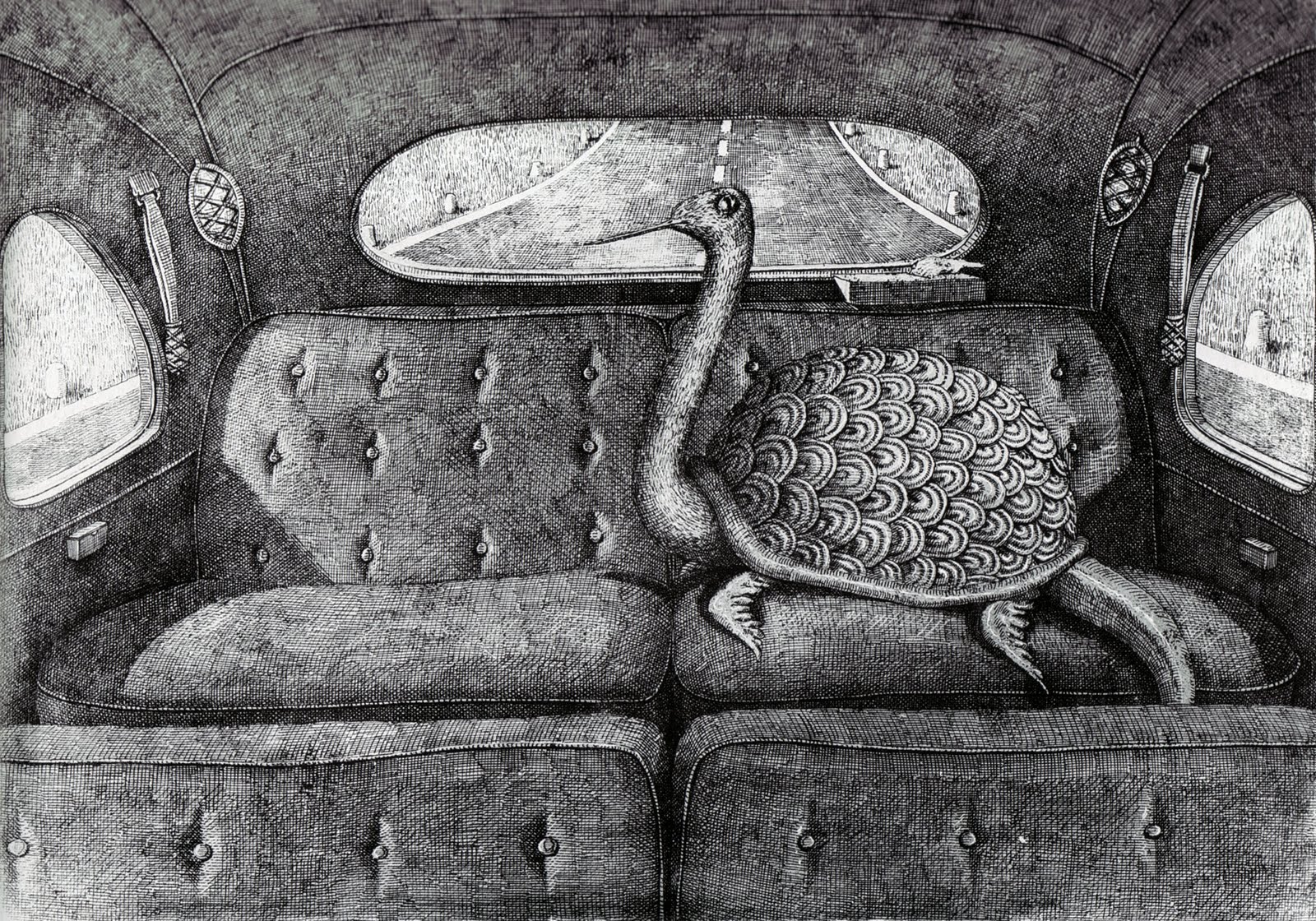Negativism. Complaint like art

The most difficult obstacle of our brain. Negativism blocks actions at once on three levels of the path to success - it prevents the setting, the pursuit and the achievement of the goal.
Negativism is the art of complaining. Instead of focusing on learning, creating and introducing something new, negatively-minded people focus on complaints about themselves and others, the environment and the future. When we see around need, scarcity, scarcity or inaccessibility, then we will get exactly that.
How to notice the negativity
Primary action: I complain
The main symptoms of negativity:
- We complain a lot, swimming in the waves of self-blame and self-pity.
- We feel rejected and offended. We do not like and do not appreciate, and we do not trust.
- Our life is unfair and seems to be a lost battle.
- Chronically bad mood, anxiety, anxiety, resentment and bitterness everywhere pursue us.
- We can masterfully spoil good moments.
- We condemn quickly, hastily and are inclined to immediately notice the shortcomings and flaws in people.
- We tend to notice and remember only the bad qualities, and the good ones are professionally ignored.
- We judge all those whom we know personally, and those whom we have never met, for example, politicians and "stars".
- If the situation allows, then we will speak in the eyes of the shortcomings of people, even if no one asks. But compliments and praise from us do not wait.
- And we passionately and selflessly condemn others behind their backs.
- We criticize people for small and trifling things, and sometimes we don’t need a reason for criticism.
- We judge the person as a whole, choosing one defect.
In negativity there is also a more subtle and intellectual form, it can often seem to be your own opinion or hiding behind the mask of cynicism.
- We predict a dark future and act as if we are able to predict the result.
- We focus only on the negative: the economy is collapsing, unemployment and crime are growing, the ozone layer is collapsing, the zombie apocalypse is near, infections become resistive to antibiotics, people just do what they die.
- We have no desire to do something - because whatever we do, everything will go wrong.
- It is important for us to share our gloomy predictions with others, because they, too, must stop before it is too late.
- And it's important for us to share our nightmares. Start your own business? Pff, my friend recently went bankrupt. Back to school? Why, because unemployment is the highest among graduates. Get away from the hated and low-paid job? Ha, rejoice that you generally have a job!
The hidden mechanism of negativism: inability to reason.
Negativism is the inability to reason sensibly. Our brain is looking for patterns and similarities that will eventually grow into theory. With the help of theories, everything that happens around and within us is explained and predicted. For example, doctors use theories to make a diagnosis, and negativists use theories to poison their lives.
')
Every day life problems become more and more, and our brain simplifies the decision-making process. To do this, it develops algorithms for processing data that we continuously receive and store in memory.
These algorithms are called heuristic - these are the shortest paths, methods of selection, organization and use of information brought to automatism.
Heuristics is a style of cognitive reaction or a different mental habit. And bad habits cause failures, they are called cognitive distortions.

Cognitive distortion

Here are the most important cognitive distortions that contribute to the development and consolidation of negativism:
Bias convictions: I think so - therefore, this is true
This means that a person considers as correct and logical those statements that sound convincing to him. Because of his bias towards his theories, he doesn’t care about checking the facts: conviction makes theory the truth in his eyes, and searching for evidence requires extra effort ...
Conclusions are not based on logic, but on coincidence with expectations.
Confirmation bias: find what you are looking for
Man wants his theories to be correct. Confirmation bias is based on the need to defend theories from evidence that can refute them.
The person will accept the facts for consideration, but selectively. He will be inclined to notice only those data that support his theories, and will ignore the rest. As a result, the supporting evidence will accumulate, and the conviction in the loyalty of their judgments, even if it is erroneous, will grow stronger.
Baseline Error: Ignoring Probability
Example: The baseline level of depression in the general population is about 10%, which means the statement about general depression is incorrect.
But people tend to ignore the base level and make assumptions based on their own experience, which means we are doomed to overestimate or underestimate the true prevalence.
Accessibility bias: convenience factor
This means that the decision will depend on how easy it is to come up with suitable examples.
For example, having learned about the outbreak of the flu in the area, and then having felt the temperature increase, we will most likely suspect this infection.
Snap Effect: Cover Book Judgment
Binding - the tendency to make decisions to rely on the first impression that sets the tone forever, and expectations will be based on it.
Tendency to belated judgments: I knew it!
The tendency to overdue judgments concerns the perception of situations, the outcome of which is already known, and reflects the inclination of a person after the fact to exaggerate his ability to predict the outcome.
Bias intuition: I feel - it means right
Another factor that influences decision making is the bias of intuition. Feelings always influence the facts: pleasant things will seem important, and what you don’t like is dangerous, hostile or worthless.
Side effects of negativity

Negativism deprives of enthusiasm and motivation, and also undermines efforts. It destroys a person’s potential and can destroy physical and mental health, relationships, careers and quality of life.
Here is a list of the side effects of negativity:
- Mistrust. In this world, no one can be trusted or trusted by anyone. People are careless, not prudent, hostile and insincere. You cannot count on a partner, and you cannot feel safe.
- Learned helplessness. Negativism leads to passivity - if a person does not believe that everything can be changed, then why try?
- Pessimism.
- Insulation. No one likes complainers and grumblers, only negative comes from them.
- Collusion. Despite the repulsive properties of the negativists, there will always be those who support them and share their view of this imperfect world. They will complain to each other, sympathize with and lament the cruelty of people. Although it is believed that together more fun, but the company is chosen gloomy, and the longer the mutual exchange of complaints continues, the deeper people go into the depths of negativity.
- Depression.
Strategies for overcoming negativism

Thanks
Focusing on the good is the most effective way to cope with negativity. How much good do we see in the world around us? Most people notice and remember the morning traffic jams, not the sunny morning.
However, for many people, the day is not bad at all, and in dark colors it is colored due to negative events that we notice.
Two daily activities will help notice more good things in life:
- Keeping a diary. Begin regularly to make a list of things that brought pleasure and pleasant feelings. The main thing - specifics.
- Emphasizing admiration. Agree with someone from the family and ask each other two questions every six months: “What is the most exciting event in the last six months?” And “What do you expect in the next six months?”.
Search for diamonds
Having caught yourself in negative thoughts, stop. It is important not to allow them to linger in their heads, but to start looking for something good in what happened. The main thing - always strive to find at least one thing that will be like.
Nothing to say - better keep silent
Negativism will begin to fade if you refrain from negative statements. If you can’t say anything good, productive or useful, don’t say anything.
It is important, when saying something negative, to take into account your intentions and think about the effect that follows the statement.
Internal dialogue
If, however, decided to speak - scroll through the dialogue in my head. And if you notice that it is built in a negative way, then try to rebuild it in a positive direction, or at least in a neutral.
Avoid "black holes"
Negative-minded people are like black holes. They like a magnet attract all negative. There will always be complaints and discontent around them. Even if you are not prone to negativity, being close to them may lead you in the wrong direction. The main thing is not to succumb to their influence and not to let the torch of optimism inside us go out.
Find a positive
The best cure for negativity is a good portion of positive, and the best source of positive is another person.
Positive people are encouraged to act and pursue goals, ask questions and look for solutions. They energize and motivate great things. Look for such people and try to communicate with them more.
Other articles on brain traps:
About perfectionism
About multitasking
About procrastination
Self-doubt, impatience, and source review
A source:
 Posted by: Theo Tsausidis
Posted by: Theo TsausidisBrain with obstacles. 7 hidden barriers that prevent you from achieving goals
Original: Brainblock. Overcoming the 7 Hidden Barriers to Success
Publisher: Mann, Ivanov and Ferber, 2017
Source: https://habr.com/ru/post/402095/
All Articles